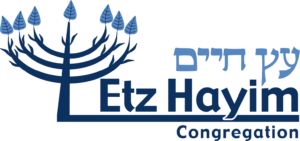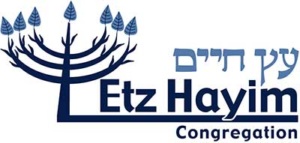Instructions for counting the omer are found on our Omer Overview Page. You can find the specific blessing for today at chabad.org.
We’re dedicating new Siddurim on the first day of Shavuot. In honor of this wonderful occasion, we’re using the counting of the Omer to learn about the siddur.
Enjoy today’s siddur related question and answer, which was provided by The Internet.
Say I was transported back to the 1500’s and picked up a siddur then. What changes would I expect to see from our siddur today?
Here are some notable aspects of that siddur:
“”… the full text of the Kaddish is completely absent from the siddur (only the beginning of the special graveside Kaddish is printed), presumably because most people knew it by heart and/or approached the cantor’s lectern to recite it.
Another indication of the siddur’s historical setting can be discerned in some of the nuances of the prayers’ wording. For instance, while the “heretics’ blessing” in the weekday Amidah begins Ve-la-malshinim (for the informers) and not Ve-la-meshummadim (for the apostates) as in earlier versions, and while Aleinu omits the line she-hem mishtahavvim la-hevel va-rik (for they prostrate themselves to vanity and emptiness), at least two prayers which would be censored in later siddurim appear here uncensored: one of the blessings recited after the haftarah preserves the text la-aluvat nefesh tinkom nakam bi-meherah be-yameinu (avenge the vengeance of the downtrodden [nation] quickly, in our days), and the Av ha-rahamim prayer includes the line be-yameinu le-einenu nikmato ve-nikmat torato ve-nikmat dam avadav ha-shafukh ([may He avenge], in our days and in front of our eyes, His vengeance, the vengeance of His Torah, and the vengeance of His servants’ spilled blood). Similarly, we should not be surprised to find that later additions to the prayers, like the entire Kabbalat shabbat service and certain embellishments to the blessing of the new moon, are absent from our edition. Likewise, the change from ve-yismehu bekha yisra’el ohavei shemekh (the People of Israel, who love Your Name, shall rejoice in You) to ve-yenahu bah yisra’el mekaddeshei shemekha (the People of Israel, who sanctify Your Name, shall rest on it) in the Amidah for the Sabbath had not yet occurred, and the Passover Haggadah does not include Hasal seder pesah, Ehad mi yodea, and Had gadya among the songs sung at the end (although these had already been incorporated into other Ashkenazic Haggadot by this point in history). More globally, the vocalization of many of the prayers reflects a strong tendency toward mishnaic, rather than biblical, Hebrew forms (which were common before the prayers were “corrected” by later grammarians), like plurals ending in nun rather than mem and “feminine” pronominal suffixes like -akh or -ekh instead of -kha or -ekha.
We also find a number of unusual prayer formulations in this unicum not commonly featured in modern Ashkenazic-rite siddurim. Examples include the presence of the blessings magbiah shefalim and somekh nofelim in the birkhot ha-shahar; the blessing li-gemor et ha-hallel (typical for Sephardim but not for Ashkenazim, who usually say li-kero et ha-hallel) recited before commencing hallel; the blessing bore peri ha-gefen (rather than ha-gafen, the vocalization more prevalent among Ashkenazim) recited before drinking wine; the blessing for Sefirat ha-omer, which ends al sefirat ha-omer she-ha-yom la-omer yom ehad (reflecting the halakhic view that the number of days in the Omer must be included in the blessing itself); among others. Perhaps most surprising of all is the quotation of Deut. 6:20 in the mouth of the Haggadah’s wise son. All of today’s Haggadot have the text, “What mean the decrees, laws, and rules that the Lord our God has enjoined upon you?” Our siddur, though, replaces the word for “you” (etkhem) with the word for “us” (otanu) – evidence that that (non-masoretic) version of the biblical text (attested already in the Jerusalem Talmud, Pesahim 70b) was still in circulation at this very late stage!
It was not uncommon for correctors in print shops to slip their own and/or their children’s names into siddurim and mahzorim on which they were working. Interestingly, our prayer book is no exception in this regard. Cornelio Adelkind, a longtime employee of Bomberg’s whose Hebrew name was Israel bar Baruch ha-Levi, managed to insert himself into the special reshut (liturgical prelude) for grooms reproduced in the piyyutim section of the volume. (He did the same thing in an Ashkenazic-rite siddur he himself published in 1549.) Moreover, we see a variation on this practice in the special reshut for the man called up to finish the reading of the Torah on Simhat Torah, where the name Isaac bar Avigdor ha-Levi appears. Isaac, along with his brothers Jacob and Yom Tov, were the sons of Avigdor ha-Levi Katsav of Padua. In 1518, they founded a short-lived Hebrew press in Rome, where they printed three books authored by their relative Elijah Levita (1469-1549). Jacob subsequently moved to Trino, where he published an Ashkenazic-rite siddur in 1525. While the brothers are not known to have been directly associated with the Bomberg press in Venice, it is possible that Isaac sponsored or in some way collaborated on the printing of the present siddur.””
https://www.sothebys.com/en/auctions/ecatalogue/2017/important-judaica-n09687/lot.132.html


